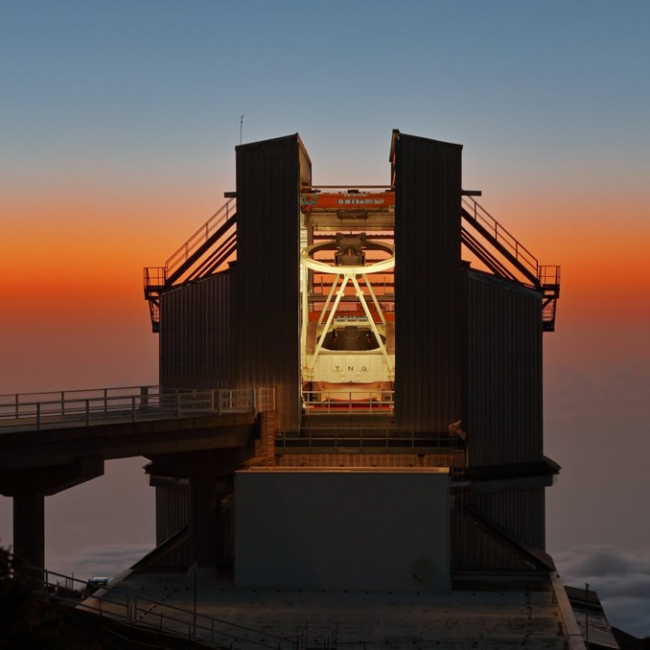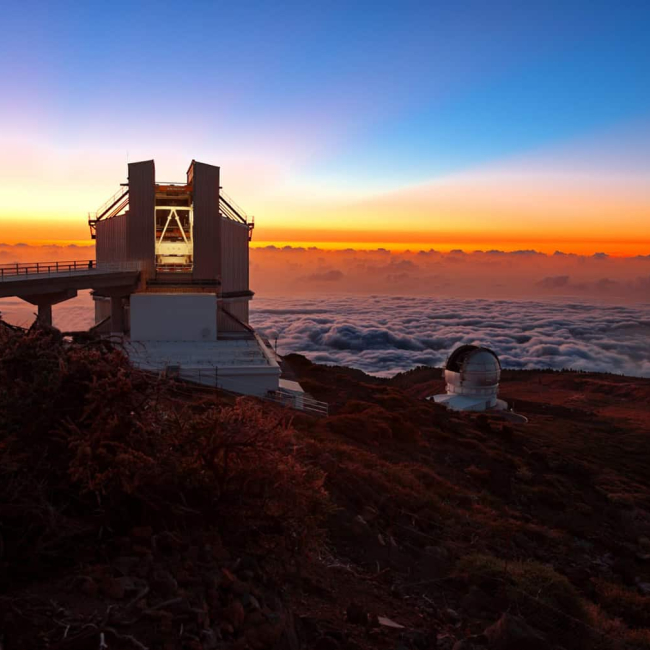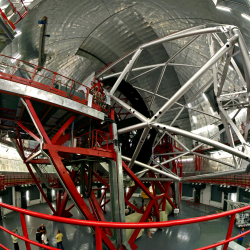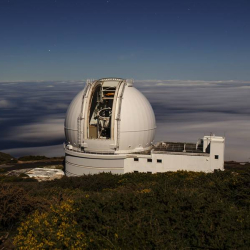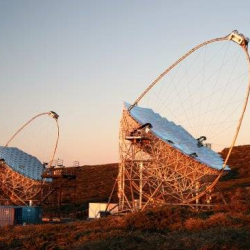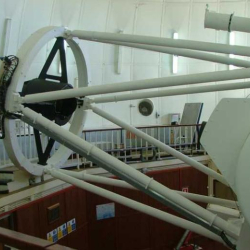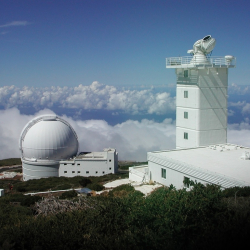Telescopio Nazionale Galileo
Santa Cruz de Tenerife
Spain
At Roque de los Muchachos Observatory (ORM), on the rim of the Taburiente National Park, at 2396 metres above sea level in the municipality of Garafía (La Palma) stands one of the largest arrays of telescopes in the world.
Descripción
The Telescopio Nazionale Galileo (TNG), located at the Roque de los Muchachos Observatory in La Palma, is one of Italy's premier telescopes for modern astronomy. With a primary mirror of 3.58 meters in diameter, the TNG specializes in optical and infrared observations, allowing it to study a wide range of astronomical phenomena, from star formation to the search for exoplanets.
The TNG is equipped with state-of-the-art instruments, including high-resolution spectrographs and wide-field cameras, which allow detailed observations across different wavelengths. These tools are essential for research areas such as exoplanet characterization and star formation processes in the Milky Way and other galaxies. Furthermore, the TNG is part of important international collaborations exploring the nature of the universe.
One of TNG’s primary research focuses is the search for planets beyond the solar system. Using advanced spectrographs such as HARPS-N, the TNG has made significant contributions to the detection and analysis of exoplanets, including those in habitable zones that could potentially support life. These discoveries have been critical in advancing the understanding of planetary systems beyond our own.
Over the years, the TNG has been updated to keep pace with technological advancements in astronomy. Its involvement in large scientific projects and its versatility as an astronomical research tool make it essential for astronomers exploring the mysteries of the universe.
Datos técnicos del telescopio
- Optical System Type: Reflector or Newtonian Telescope
- Mount Type: Equatorial Mount
- Mount Movement Type: Computerized Mount


